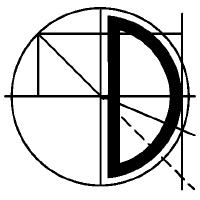Patient-Centered Chronic Wound Care Mobile Apps: Systematic Identification, Analysis, and Assessment
JMIR mHealth and uHealth, (March 2024)DOI: 10.2196/51592
Abstract
Background: The prevalence of chronic wounds is predicted to increase within the aging populations in industrialized countries. Patients experience significant distress due to pain, wound secretions, and the resulting immobilization. As the number of wounds continues to rise, their adequate care becomes increasingly costly in terms of health care resources worldwide. eHealth support systems are being increasingly integrated into patient care. However, to date, no systematic analysis of such apps for chronic wounds has been published. Objective: The aims of this study were to systematically identify and subjectively assess publicly available German- or English-language mobile apps for patients with chronic wounds, with quality assessments performed by both patients and physicians. Methods: Two reviewers independently conducted a systematic search and assessment of German- or English-language mobile apps for patients with chronic wounds that were available in the Google Play Store and Apple App Store from April 2022 to May 2022. In total, 3 apps met the inclusion and exclusion criteria and were reviewed independently by 10 physicians using the German Mobile App Rating Scale (MARS) and the System Usability Scale (SUS). The app with the highest mean MARS score was subsequently reviewed by 11 patients with chronic wounds using the German user version of the MARS (uMARS) and the SUS. Additionally, Affinity for Technology Interaction (ATI) scale scores were collected from both patients and physicians. Results: This study assessed mobile apps for patients with chronic wounds that were selected from a pool of 118 identified apps. Of the 73 apps available in both app stores, 10 were patient oriented. After excluding apps with advertisements or costs, 3 apps were evaluated by 10 physicians. Mean MARS scores ranged from 2.64 (SD 0.65) to 3.88 (SD 0.65) out of 5, and mean SUS scores ranged from 50.75 (SD 27) to 80.5 (SD 17.7) out of 100. WUND APP received the highest mean MARS score (mean 3.88, SD 0.65 out of 5) among physicians. Hence, it was subsequently assessed by 11 patients and achieved a similar rating (uMARS score: mean 3.89, SD 0.4 out of 5). Technical affinity, as measured with the ATI scale, was slightly lower in patients (score: mean 3.62, SD 1.35 out of 6) compared to physicians (score: mean 3.88, SD 1.03 out 6). Conclusions: The quality ratings from physicians and patients were comparable and indicated mediocre app quality. Technical affinity, as assessed by using the ATI scale, was slightly lower for patients. Adequate apps for patients with chronic wounds remain limited, emphasizing the need for improved app development to meet patient needs. The ATI scale proved valuable for assessing technical affinity among different user groups.
Links and resources
Tags
community
@se-group's tags highlighted


